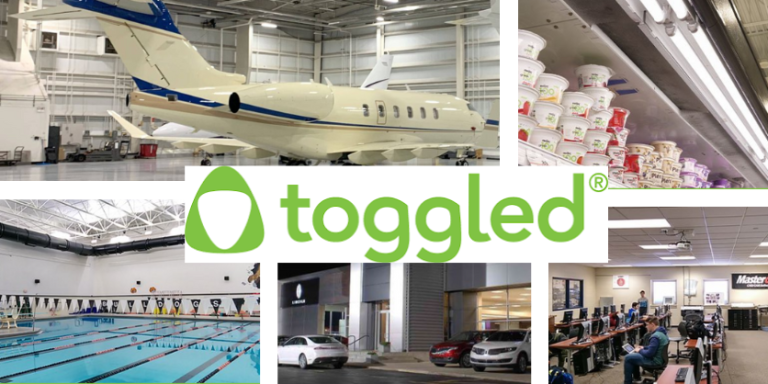5 Simple Steps Towards Sustainable Lighting
February 20, 2024

Here are five practical actions you can take –today! – to move towards designing more sustainably.
Sustainability in lighting – a broad, sometimes confusing topic, that can be looked at in many ways. Circular lighting economy, material ingredient reporting (MIRs), environmental product declarations (EPDs), life cycle analyses (LCAs), factory working conditions, carbon counting, recycling/buyback programs, and more – are all different lenses of sustainability in lighting. There’s a lot of buzz and it can seem overwhelming, but getting started is easy! Here are five practical actions you can take –today! – to move towards designing more sustainably.
1. Require all lighting products you specify to be made with RoHS-compliant components.
RoHS (Restriction of Hazardous Substances) is a directive that restricts substances that are known to be harmful to the environment and human health in manufacturing. When electronic products containing these hazardous materials are disposed of improperly or end up in landfills, there is a risk of them leaching into soil and water, posing environmental hazards. The manufacturing and disposal processes of electronic devices can also expose workers and communities to health risks associated with these substances.
While RoHS originated in the EU (all applicable products must be compliant since 2001), its influence has extended globally, and many manufacturers worldwide adhere to RoHS standards to ensure market access and address growing environmental concerns. LED technology itself does not inherently contain these hazardous substances, so luminaires can very feasibly be RoHS compliant – and many already are.
How to do it:
In design:
• Design around RoHS-compliant products, seeking the “RoHS Compliant” stamp or the CE mark on product cutsheets.
• Clearly state “RoHS compliance required” on the luminaire schedule/notes for all products.
• If suggested products fall short of compliance, request the product manufacturer’s local agent to convey the criteria to the manufacturer and encourage RoHS compliance.
In Bidding/Construction Administration:
• During submittal reviews, verify the presence of the “RoHS Compliant” stamp or the CE mark on product cutsheets.
2. Reach out to Your Reps
Why?
A great manufacturer’s rep can be a valuable resource, and being clear with them about your goals can supercharge their effectiveness for you and your team.
How to do it:
Consider sending an email like the one below (feel free to borrow this text!) or having a chat with them covering similar points:
Hi [Rep’s Name],
At [Your Firm], we prioritize sustainability and are seeking your assistance in identifying manufacturers who share this commitment. Considering the broad nature of sustainability, we are specifically interested in prioritizing products that meet the following criteria:
1. It has a Declare label, Health Product Declaration (HPD), LPC, or similar designation detailing material ingredients and human health impacts.
2. It has an Environmental Product Declaration (EPD), LPC, or equivalent documentation outlining embodied carbon.
3. It is Zhaga-D4i-certified or is comprised of Zhagacertified components, or has field-replaceable/ upgradable critical parts (LED light engines/ modules, drivers, and connectivity/fit systems, etc.) documented for future availability.
4. Is PVC-free, including all wiring
5. Supports a circular economy via a Cradle-to-Cradle (C2C) or similar certification
6. Manufacturer demonstrates a dedicated working plan to reduce carbon, waste, and pollution, with public information available via the website or confirmation of commitment from the CEO on company letterhead.
7. Offers an associated recycling/re-use/buy-back program.
8. Manufactured by a company certified as a B-Corp/ JUST certified or similar designation.
We’re eager to discover products that align with these criteria. Please share this information with your manufacturing partners.
Thanks!
(Your Name)



3. Build Out Your Sustainable Lighting Toolbox
Why:
Staying updated on sustainable products is challenging. Save time and energy by creating a library database of your sustainable favorites once you discover them.
How to do it:
• Review your go-to products for sustainability criteria (refer to the example rep letter above).
• Encourage circular thinking and explore sustainable alternatives by engaging with reps or using search tools like LightAZ, which filters for certifications like RoHS and Declare.
• Manage your collection over time using digital tools like Sourcery. This cloud-based platform allows collaboration with manufacturers and agents to keep your library current.
4. Set An Achievable Goal Based On Your Project Size
Why?
While every project offers sustainability opportunities, implementing a comprehensive sustainable lighting agenda might not be equally practical for each. Aiming for achievable, scalable project goals by focusing on common fixture types leverages economies of scale and strengthens bargaining/ purchasing power.
How to do it:
• Establish targets for products with Material Ingredient Reporting (MIR), such as HPDs or Declare Labels.
• Tailor sustainable criteria based on project size, as exemplified by the LAL toolkit v2’s sample targets.
Goals by Project Size:
Small (<70K SF): Top quantity fixture to have HPD or Declare Label
Medium (70-200K SF): Top 1-3 quantity fixtures to have HPDs or Declare Labels
Large (200+K SF): Top 1-5 quantity fixtures to have HPDs or Declare Labels
5. Talk about the topic!
Why:
Creating a signal for change takes a little noise, and manufacturers need to hear from the market (that’s us!) about our preferences. The clearer and louder the “ask”, the better! We have lots of tools at our disposal to help communicate the kinds of lighting tools we want to use in our practices.
How to do it:
• Educate yourself! If any of the terms or designations in the info above are new to you, do a little research. The Lighting Advocacy Letter’s Toolkit and webinars hosted on Mindful Materials’ website are a great place to start!
• Ask questions! Start the conversation with your local reps or your favorite manufacturers and ask about sustainability goals and product roadmaps. At your next tradeshow, ask your reps to give you a tour of their most sustainable lines, or attend one of the many educational seminars trending on the topic.
• Share your knowledge! If you’re part of a team, bring your group up to speed, and when opportunities arise, let your other design partners and clients know about the ways lighting can support their broader sustainability goals. Post great resources on social media, follow manufacturers and designers leading the charge, and engage in the always ongoing dialogue.
Moving the needle is easier than you think. By making informed choices and advocating for change, designers can contribute to a healthier, more sustainable future for lighting.
Published with the permission of Designing Lighting, More information available here









